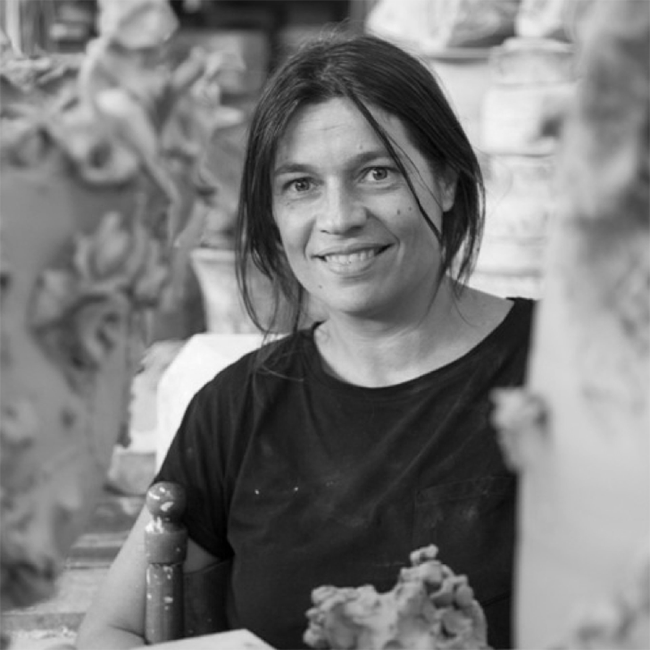Chiara Camoni
Born in Piacenza in 1974, Chiara Camoni lives and works in Tuscany, in the mountains of Versilia.
She attended the Brera Academy of Fine Arts, where she graduated in 1999. The following year she was artistic director of the Institute for the Diffusion of Natural Sciences in Naples, and between 2002 and 2006 she was invited to give lecture series at the educational section of the National Archaeological Museum. In recent years Chiara Camoni, with artists Alessandra Andrini and Luca Bertolo, has been directing MAGra (Museum of Contemporary Art in Granara, Tuscany).
Chiara Camoni's poetics is based on an often shared making that measures time and sometimes indulges its unexpected "suggestions." Her main medium is sculpture, but she also works with drawing and video.
The themes that characterize her artistic investigation are the passage of time, nature and its creative power, ritual, affections and relationships: all elements that inevitably open the work to a component of randomness, visible as a trace in the materials and in the processuality of creation of the work.

Born in Piacenza in 1974, Chiara Camoni lives and works in Tuscany, in the mountains of Versilia.
She attended the Brera Academy of Fine Arts, where she graduated in 1999. The following year she was artistic director of the Institute for the Diffusion of Natural Sciences in Naples, and between 2002 and 2006 she was invited to give lecture series at the educational section of the National Archaeological Museum. In recent years Chiara Camoni, with artists Alessandra Andrini and Luca Bertolo, has been directing MAGra (Museum of Contemporary Art in Granara, Tuscany).
Chiara Camoni's poetics is based on an often shared making that measures time and sometimes indulges its unexpected "suggestions." Her main medium is sculpture, but she also works with drawing and video.
The themes that characterize her artistic investigation are the passage of time, nature and its creative power, ritual, affections and relationships: all elements that inevitably open the work to a component of randomness, visible as a trace in the materials and in the processuality of creation of the work.
